i post about historical architecture and art and related, from Flanders and from my travels. Graduated in art history. All pics i took myself, if not i mention. Also active on Bluesky and X: same username.
Don't wanna be here? Send us removal request.
Text

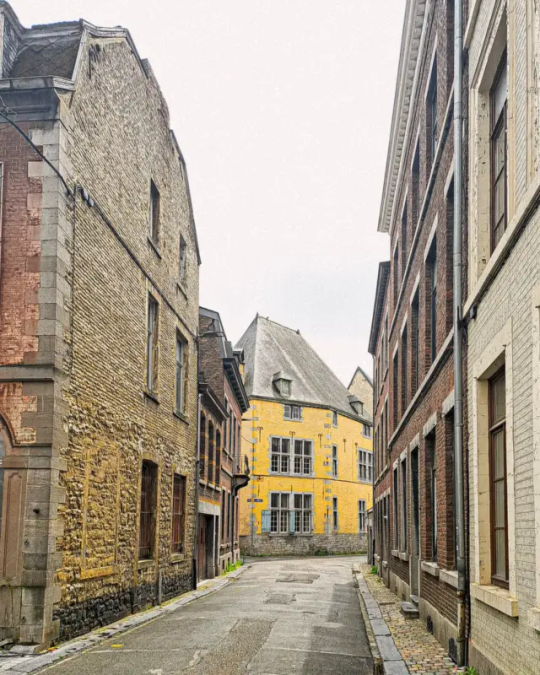


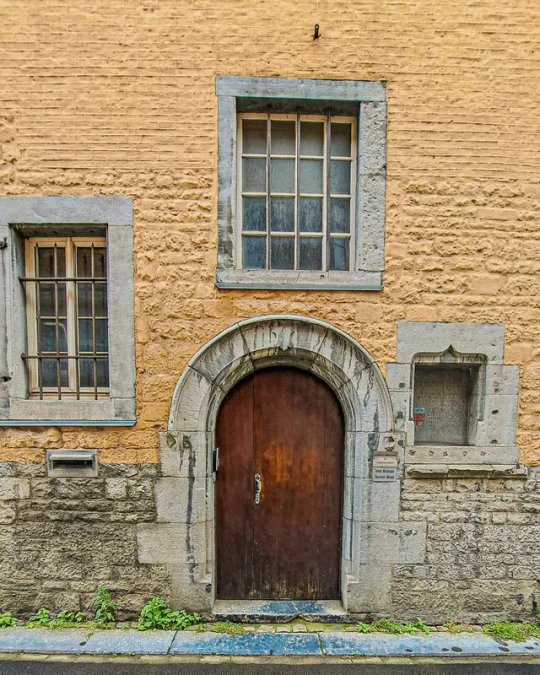
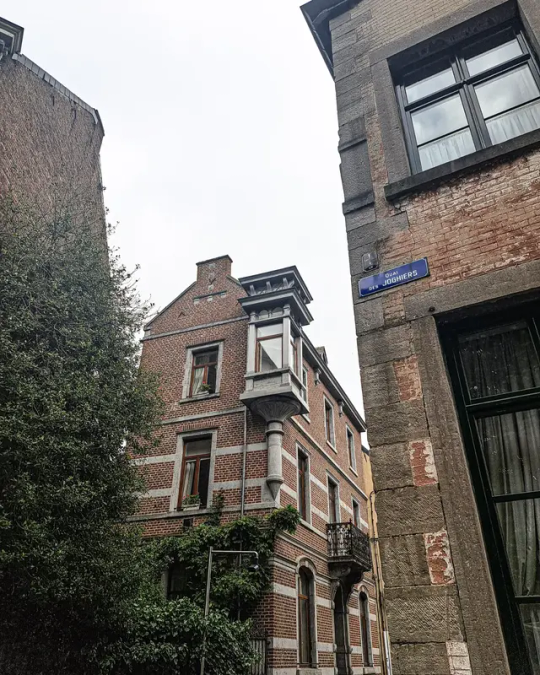
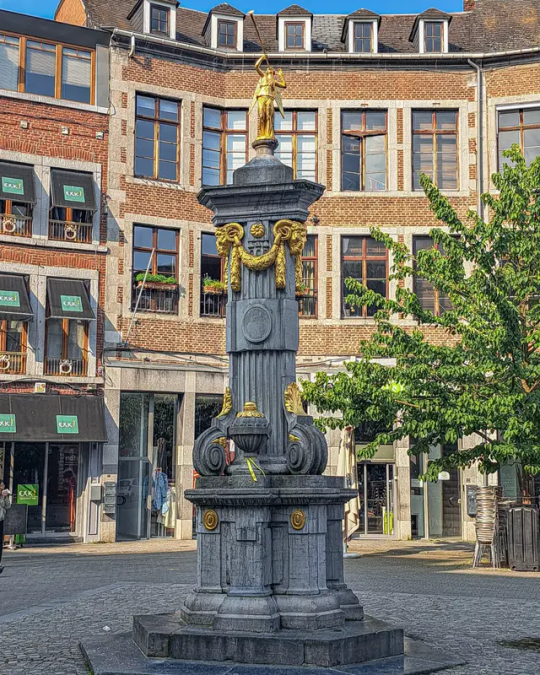
A stroll through the old city of Namur, the capital of Wallonia, which is the southern french speaking region of Belgium.
The city is old; inhabited continuously since 2500 BC, a vicus in later roman times it retracted as a small fortified town around the late 3rd century AD, and becoming a market town in the 11th century surrounded by a stone city wall. The city grew steadily and in 1530 a 4th enlarged city fortification had to be constructed. Initially ruled by local lords it got a city council during the 12th century. In the 15th century the city had 8000 inhabitants, significantly less than the populous and prosperous cities in Flanders.
Between 1578 and 1585 it temporaly becomes the capital of the Habsburg rule of the Netherlands after protestant troops took Brussels.
In the 17th and 18th century the city is attacked and bombarded several times by an wide array of battling parties as part of different wars, The French wars, the Spanish Succession War, the Austrian War of Succession. And the fortress above the city housed for almost 2 centuries a garnison of the army of the Dutch Republic.
The city's importance was always it's strategic location. Also during the Industrisl revolution it was in important logistical hub between neighbouring industrial regions.
Just before the First World War initially unofficial and during the War officialised by the oocupying power ( German Empire) , the city became the capital of the French speaking part of Belgium.
#namur#belgium#europe#architecture#historic buildings#historical#architectural history#history#street photography#old building#buildings#visit#city travel#travel#explore#wallonia#wallonie#belgie#belgica#belgique#citytrip#city trip#city photography#cityscape
10 notes
·
View notes
Text
Some shots of the magnificent interior of Our Dear Lady church (O-L-Vrouwekerk) in Dendermonde, a provincial town in Flanders, Belgium. Part 2 🙂









#architecture#historic buildings#europe#historical#belgium#flanders#historical interior#church interior#church#churches#iglesia#igreja#eglise#arte#artwork#art history#art#flandres#peinture#flemish painter#paintings#painting#sculpture
29 notes
·
View notes
Text
Some shots of the magnificent interior of Our Dear Lady church (O-L-Vrouwekerk) in Dendermonde, a provincial town in Flanders, Belgium.
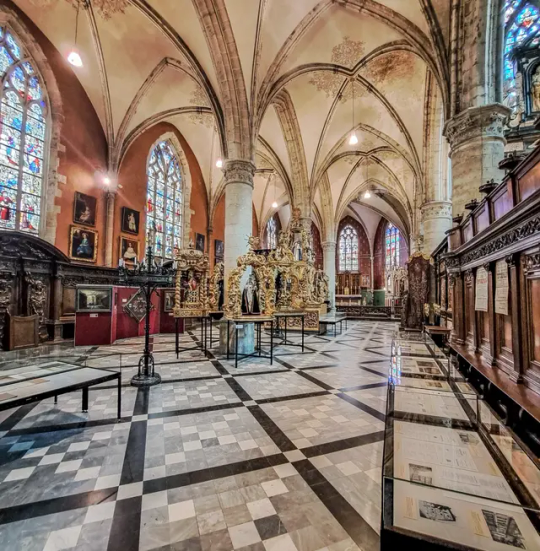
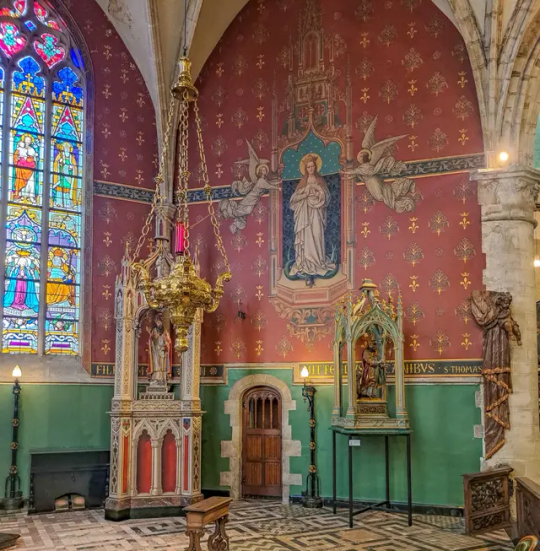
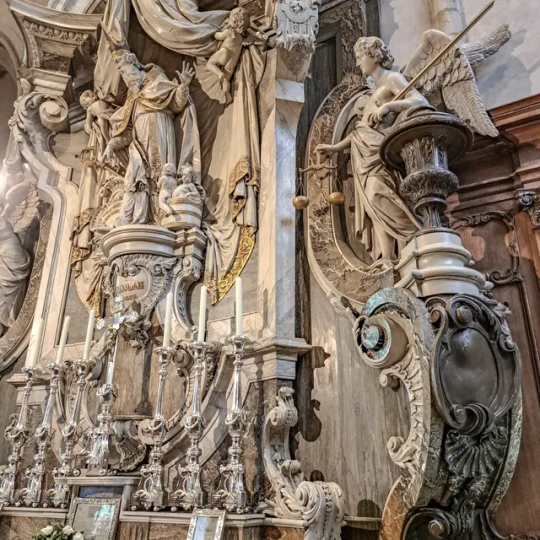
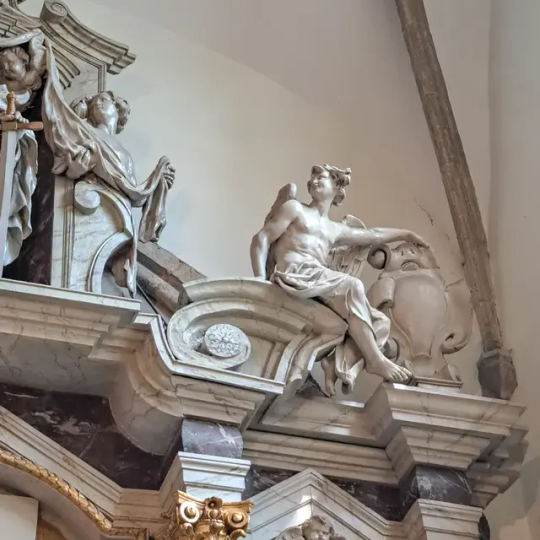
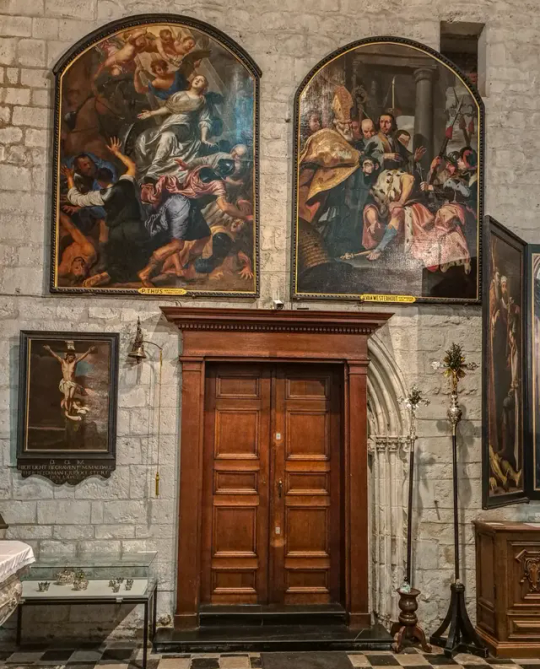

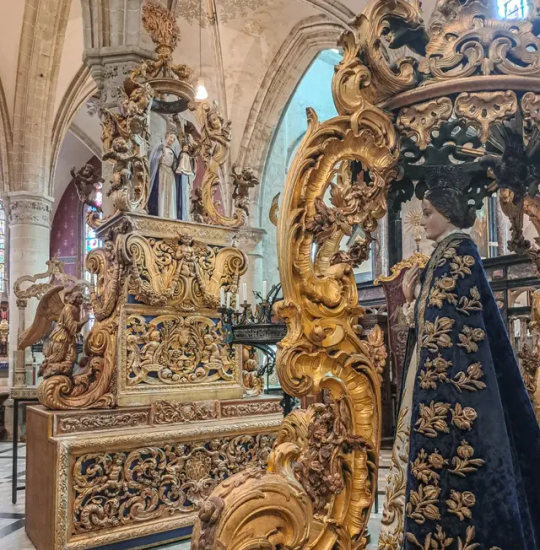
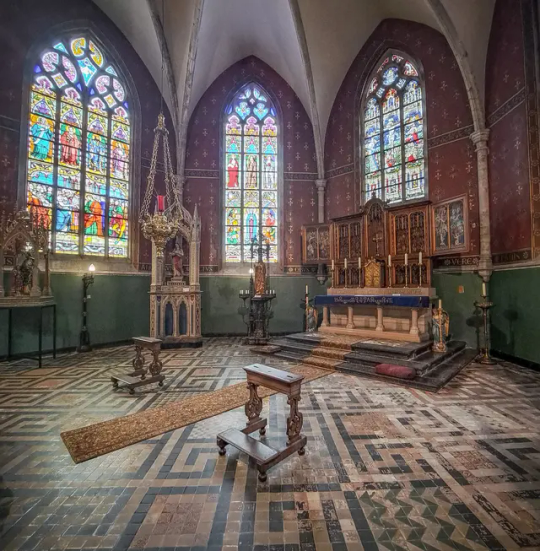
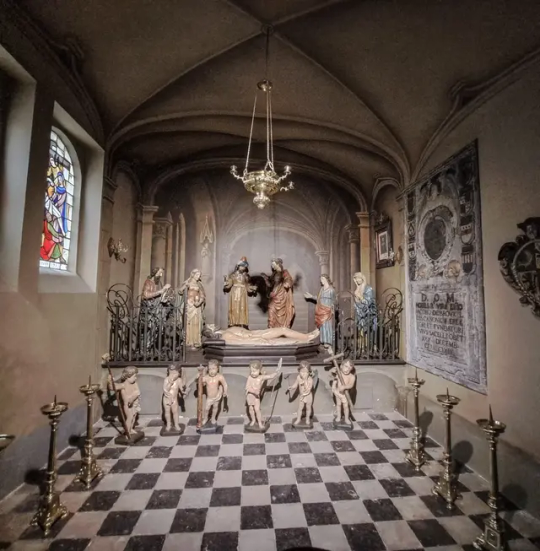
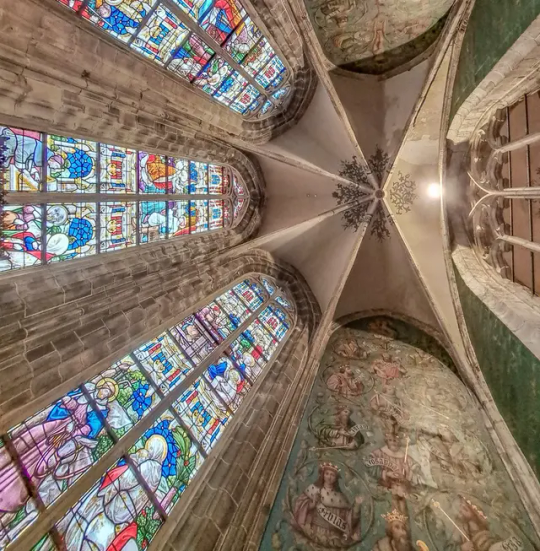
The church has a sculpted Romanesque baptismal font from the 12th century, which comes from Tournai. This is probably the only remnant of the original Romanesque church.
Main altar in early Baroque style, by Antwerp sculptor Hubrecht van den Eynde. This is a monumental portico altar of marble and alabaster, crowned with statues of the patron saints Hilduard and Christiana, and of Christ as Salvator Mundi.
The baroque rood loft dates from 1663. This once closed off the high choir. Artus Quellinus and Mattheüs van Beveren worked on this.
The pulpit, which was made of oak, is also Baroque and dates from 1681. This also belongs to Mattheüs van Beveren. The pulpit is carried by two angels who trample on a heretic who is holding a book.
In addition, you will find numerous other old church furniture, such as confessionals from the 17th century and a communion rail from 1682.
The church contains many valuable paintings, such as Christ on the cross from 1629. This painting painted by Antoon van Dyck was originally intended for the Capuchin Church, which was then located on the Vlasmarkt. After the French Revolution it was taken by the French occupiers and hung in the Louvre in Paijs. After the battle of Waterloo it returned to Dendermonde and was given a place in the Church of Our Lady. In 2024 it became known that it was being restored.
The Adoration of the Shepherds is also a work by Van Dyck. There are also an Ascension of Christ and the Martyrdom of Saint Lawrence, by Gaspar de Crayer, and two wooden panels from a triptych from 1617 by David Teniers the Elder. In 2015, this triptych by David Teniers the Elder, whose center panel disappeared shortly after 1945, was made complete again by a contemporary version of "the transfiguration of Jesus on Mount Tabor". This new painting was painted by Gerolf Van de Perre. In total there are more than 60 paintings in the Church of Our Lady.
There is also, next to the St. Nicholas altar, a statue of a young beggar, attributed to Frans Duquesnoy. Jos De Decker sculpted the granite service altar from 1975.
There is also a church treasure, which includes many silver objects, such as reliquaries, monstrances and the like.
#europe#architecture#historic buildings#historical#belgium#art history#flanders#paintings#flemish art#flemish#flandres#flandern#church#church interior#churches#flemish painter#painting#arte#artwork#art
25 notes
·
View notes
Text
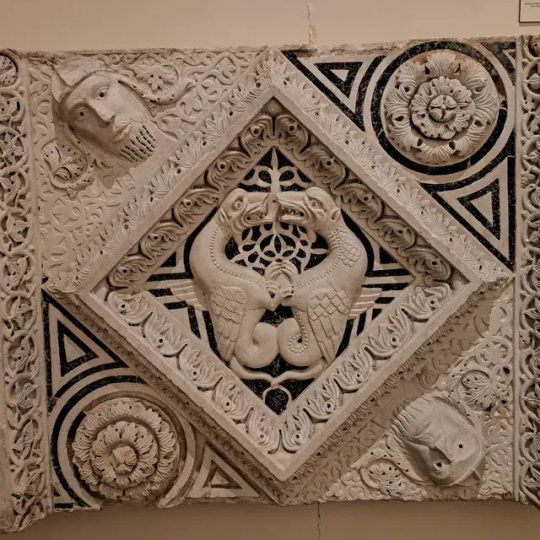
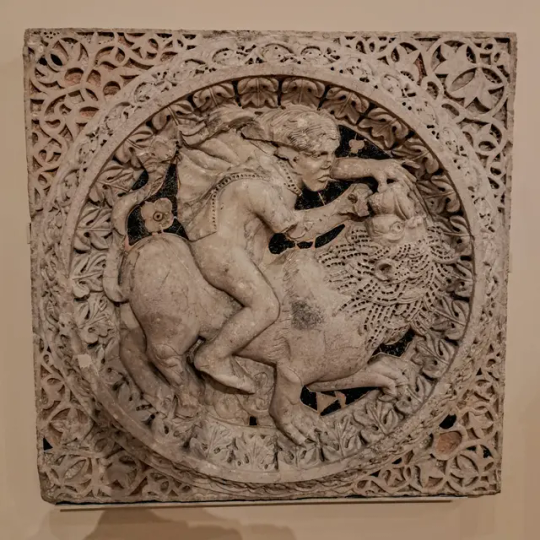



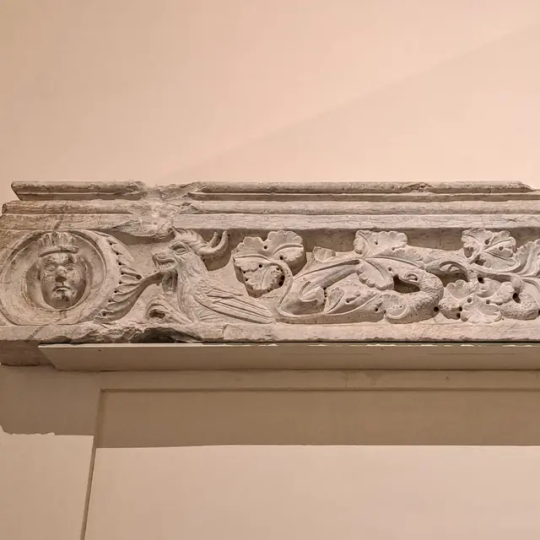
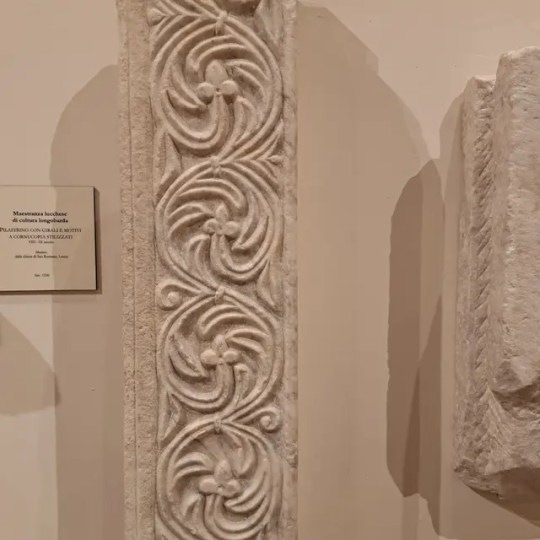

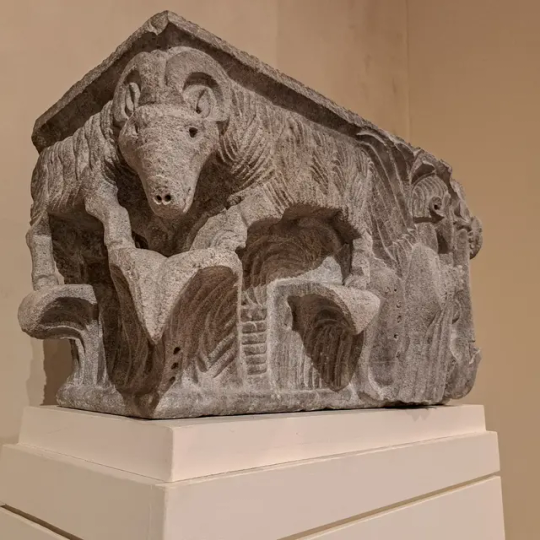

Museo Nazionale de Villa Guinigi in Lucca, Italy.
Capitals and other decorative architectural artifacts from Roman, Byzantine and early medieval period from the larger region around Lucca.
#europe#architecture#historical#architectural history#history#art history#italy#italia#lucca#museum#museo#capital#historic buildings#old building#building fragments#villa#tuscany#toscana
14 notes
·
View notes
Text

Well, would you like to live here? A duplex or triplex appartment in a housing block in neo-traditional flemish styles ?
#architecture#europe#historic buildings#architectural history#flanders#buildings#design#traditional architecture#architectural design#neotraditional#flemish#urban design#urban fantasy#urban planning#belgium
5 notes
·
View notes
Text










The Royal St. Mary's Church, Schaarbeek (Brussels Capital Region)
Louis Van Overstraeten, a young architect from Ghent, won the architectural competition in 1844 that was organized for the construction of a royal church. He died at the age of 31 and would not live to see the building's completion. The church had to be located on the route that led from the royal palace of Brussels to that of Laeken. The plan provided for a church building in Byzantine-Romanesque style with a central octagonal floor plan surrounded by radiating chapels. The whole was crowned with a dome supported by beam pillars on vault spanners. The weight of the dome was reduced by the use of metal and light cladding materials. Light pours into the base of the tambour through a belt of windows at the cornice. Van Overstraeten also added flying buttresses to strengthen the structure.
Construction began in 1845 and the church was inaugurated on August 15, 1853, in tribute to Queen Louise-Marie who had died three years earlier. The funeral of the Italian composer Giacomo Puccini, who died in Brussels on November 29, 1924, took place in the church. Especially for this occasion, the Italian orchestra leader Arturo Toscanini came to conduct the funeral march from the third act of Puccini's opera Edgar. The royal St. Mary's Church has been a protected monument since 1976.
#europe#architecture#historic buildings#historical#architectural history#history#belgium#historical interior#church#churches#eglise#kirche#kerk#cupola#dome#catholic#heritage#royal#iglesia#igreja#chiesa#hidden gems#beautiful#old building#europa#explore#city travel#church interior#19th century#exploretheworld
7 notes
·
View notes
Text
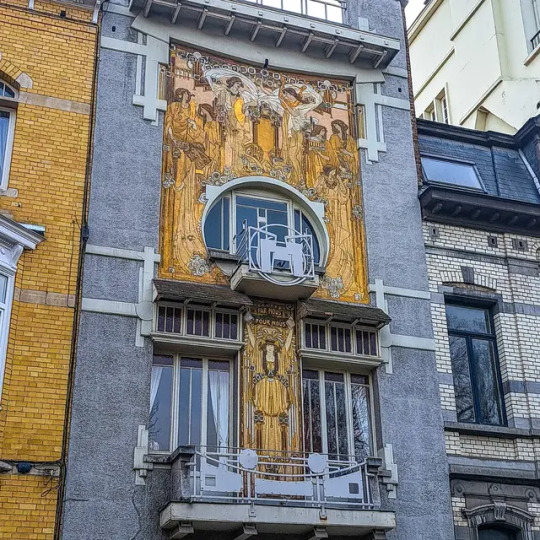

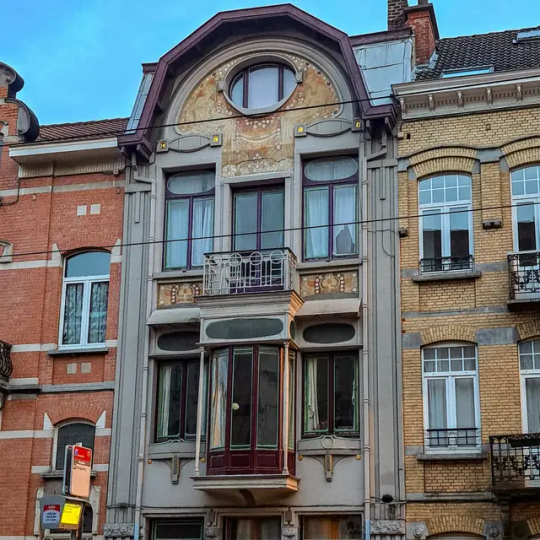
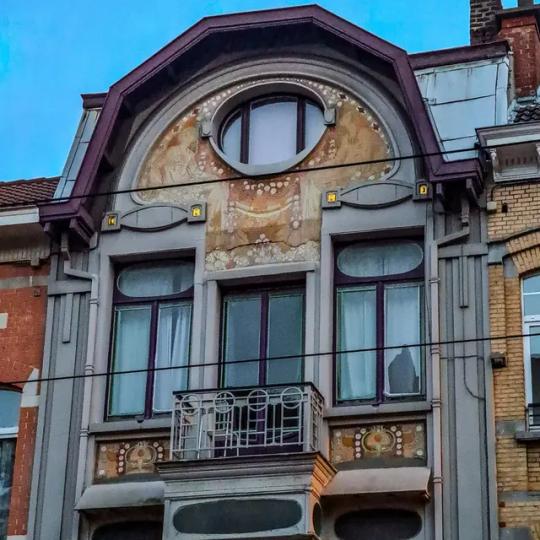
2 houses located in Etterbeek, in the Brussels Capital region, designed by Paul Cauchie. The first is his personal home, secondly a house he build as rental property.
While still a student, Paul Cauchie founded his own company in 1896, specializing in decoration. He revived the sgraffiti technique, which he had learned from Henri Baes. Cauchie also took part in many exhibitions and competitions and was awarded several awards, including the Prix Donnay. In January 1899 he made a study trip to Paris. He wanted to travel even further, but because his business was so successful, he returned. In 1901 the Cauchie family moved from Ter Hulpen to Schaarbeek.
In 1905 Cauchie married Caroline Voet (1875 - 1969), called Lina. She went on to play an important role in the decoration company. They also immediately built a house. Cauchie designed it himself at Frankenstraat 5 in Etterbeek. The house, now called Cauchie House, was built in the Art Nouveau style, but was also inspired by the architectural style of Charles Mackintosh, with the influence of Japonism. The facade is almost completely covered in sgraffiti. Cauchie's wife decorated the interior together with her husband.
Cauchie's company received a lot of orders, so he had to hire employees. In 1913 he expanded further and founded the SA Comptoir de Matériaux de Construction, with headquarters in Dinant. A company brochure from 1914 mentions thousands (!!!) of finished sgraffiti. Although sgraffiti were his most important trade mark in that period, he also designed stained glass windows (including for Villa Dageraad in Eeklo), ceiling paintings and furniture. His work (especially sgraffiti, both for outdoor decoration and in the interior) can be found in many places in Belgium.
His second design as an architect was a house on his property at Jachtlaan 141 in Etterbeek. Cauchie designed this house in 1910 and rented it out. This house has been protected since 1995.
#europe#architecture#historic buildings#historical#architectural history#belgium#history#art history#brussels#brussel#bruxelles#bruselas#art nouveau#artnouveau#jugendstil#stile liberty#modernismo#sgraffito#houses#old house#house#facade#building facade#decoration#europa#buildings#city photography#traditional architecture#japonism#beautiful
13 notes
·
View notes
Text
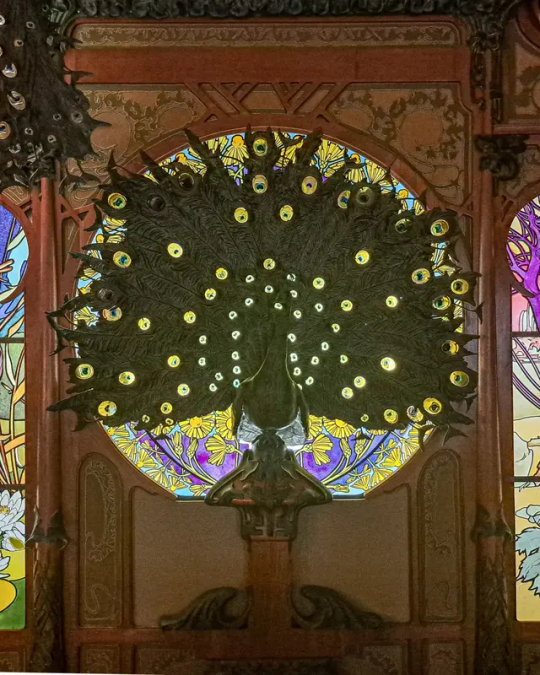
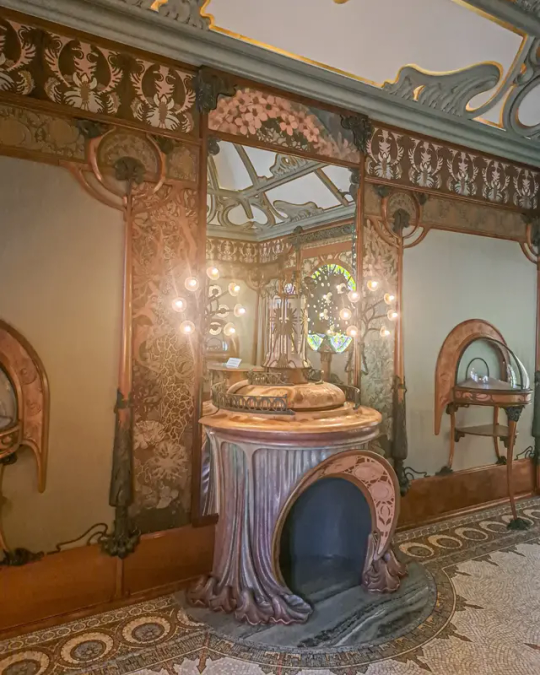


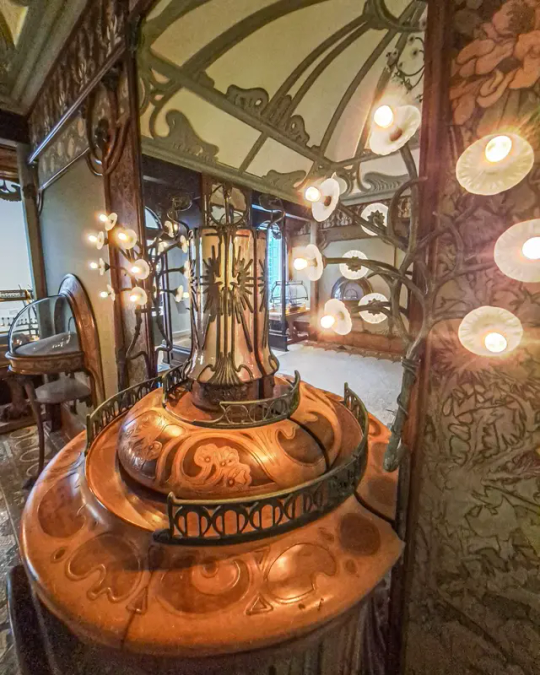

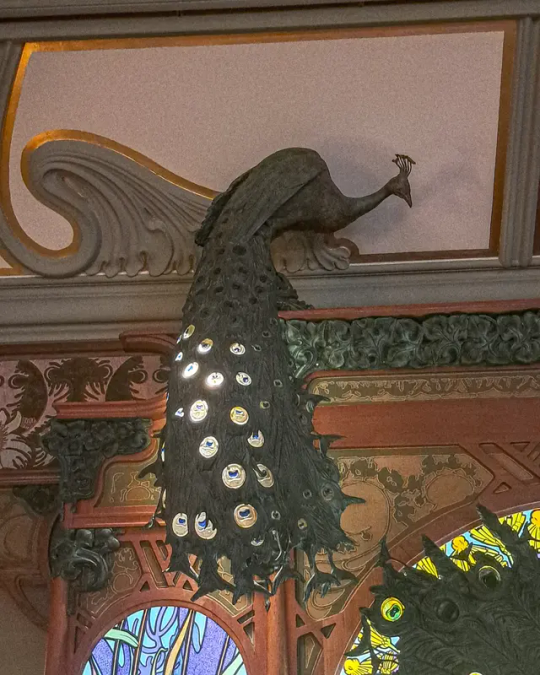


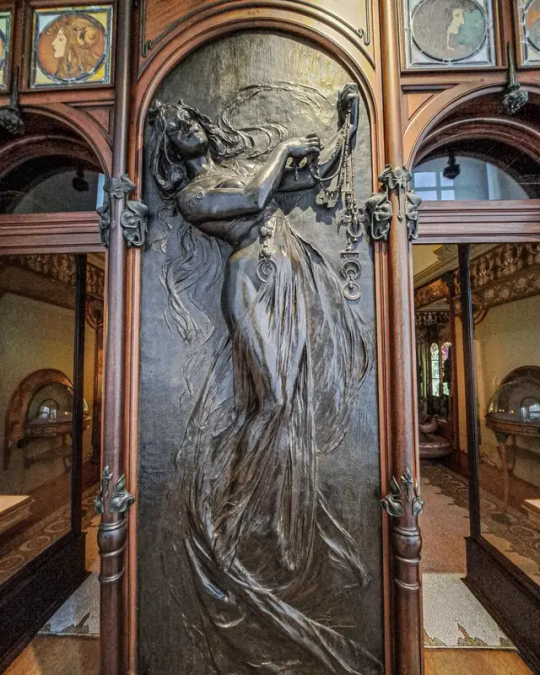
The most famous art nouveau style shop interior must be the shop of Nicholas Fouquet
L
Because of the particularly remarkable decorations of the Fouquet jewelry store, reconstituted and presented within the collections of the Carnavalet museum, you are immediately immersed in the Art Nouveau style, born in Belgium and further developed in France (and later also other distinct european regions), which will dominate the architecture, the decorative arts then the plastic arts (paintings, sculpture) until the First World War. A style characterized by curved and elegant lines; floral, plant or animal motifs inspired by nature; slender and idealized female silhouettes with extra long, flowing and evanescent hair. A style that will also put color back at the heart of arts and architecture.
To create the decorations for his jewelry store, presented here at the Carnavalet museum, Georges Fouquet (1862-1957) called on the Czech Alfons Mucha (1860-1939), an essential and emblematic illustrator of Art Nouveau from the end of the 19th century . Mucha was born on July 24, 1860 in Moravia, a region today partly encompassed by Czechia. After passing through Prague, Vienna and Munich, he arrived in Paris in 1887 to study art. At the same time, he gradually became known by producing magazines, illustrating catalogs or creating sublime advertising posters. His portraits of the famous actress Sarah Bernhardt, like those of many women in a vaporous and typically Art Nouveau style, made him famous. So much so that he was officially rewarded for his talents at the Paris Universal Exhibition in 1900, notably thanks to a collection of jewelry that he designed.
This is how, in 1901, Georges Fouquet invited Mucha to design the decor for his new jewelry store located at 6 rue Royale, between Place de la Concorde and La Madeleine. The artist created a modern and functional boutique (Art Nouveau is in fact a quest for both aesthetics and functionality), designed as a work of art in its own right. Mosaics, furniture, display cases, stained glass windows, lighting, door handles... everything in the decorations and volumes is of naturalistic inspiration, with a lot of curves, plant and floral motifs, or even animal motifs (the bronze peacocks behind and in the (counter tops are beautiful). A central figure in Mucha's work, the elegant woman is present here too, but mainly in front of the store or in small touches inside. Dreamlike, magical and almost phantasmagorical, the powerful settings imagined by Alfons Mucha will surprise, fascinate and seduce his contemporaries. Dismantled in 1923, most of the shop's decor was given to the Carnavalet museum by Georges Fouquet in 1941. But only in the 1980's the shop interior was reconstructed in the museum.
#europe#historic buildings#historical#architectural history#art history#history#paris france#paris 2024#paris#art nouveau#artnouveau#modernismo#jugendstil#stile liberty#alphonse mucha#shop window#shop interior#histoire#historical interior#museum#musee#museecarnavalet#france#peacock#interior#colorful#lighting#beautiful#travel memories#citytrip
53 notes
·
View notes
Text



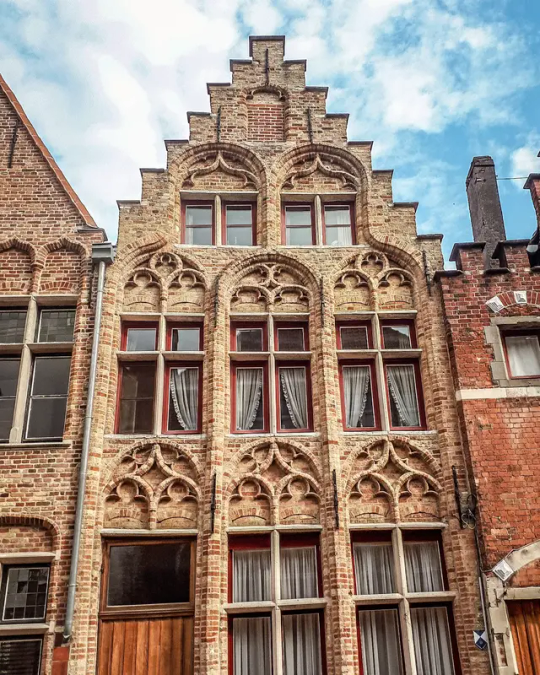




In the streets of Bruges in Flanders, Belgium.
Around 1000 AD the biggest city of Northern Europe. In the 15th century the main trading hub and cultural capital of Northern Europe; in this century Bruges was the capital of the Burgundian Empire, diamond cutting was invented here, but also the first Stock Exchange was here; on a square named Ter Beurse (leading to foreign words Bourse, Borsa, Bolsa for stock exchange.) And also in this city was organised at that time, for the first time a "loterije" , a public lottery.... a city full of history, so wel preserved the entire medieval city is a Unesco World Heritage- site.
#brugge#brujas#bruges#belgie#europe#architecture#historic buildings#historical#architectural history#belgium#history#flanders#old house#houses#old building#city streets#citytrip#city travel#cityscape#city photography#medieval#renaissance#explore#discover#histoire#geschichte#flandres#flandes#flandern#vlaanderen
29 notes
·
View notes
Text

Mercury (1650-54) / Artus Quellinus (Flemish, 1609-1668), marble, Royal Palace,Ámsterdam
93 notes
·
View notes
Text
Moet je dit zien... 👀
Moet je dit zien... 👀 https://pin.it/5Yc16WR1S
0 notes
Text


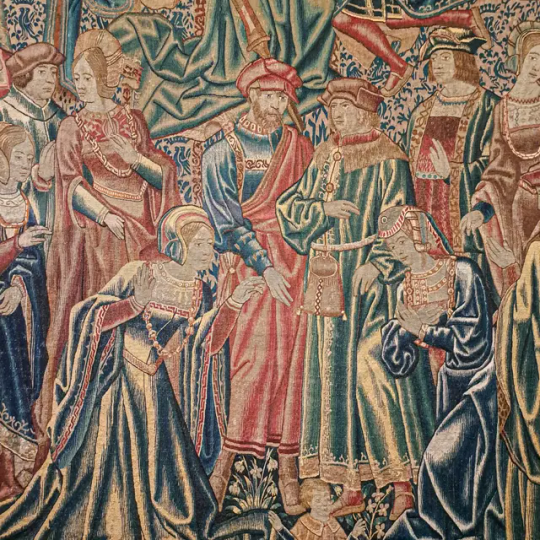


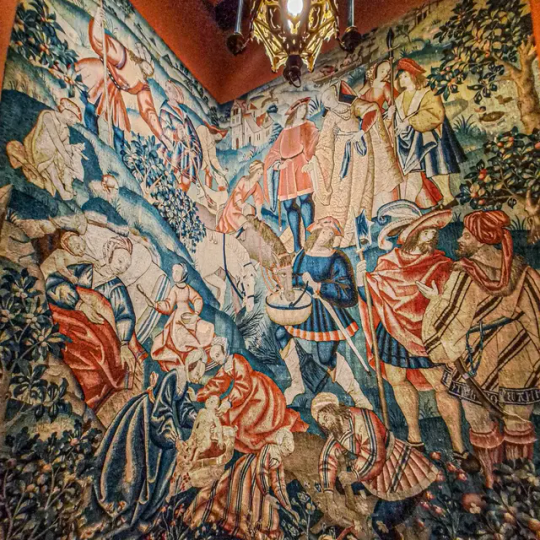
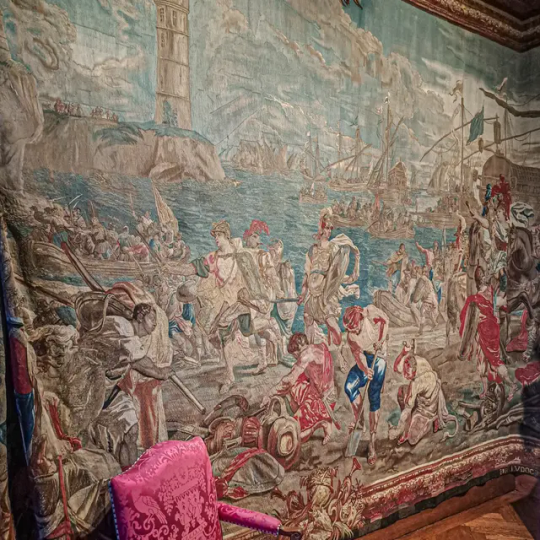
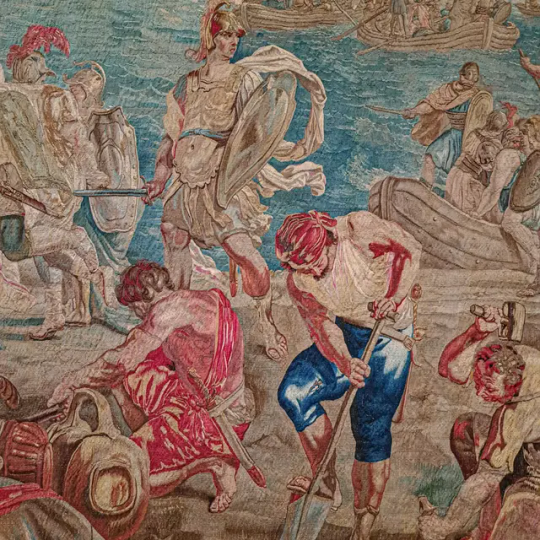
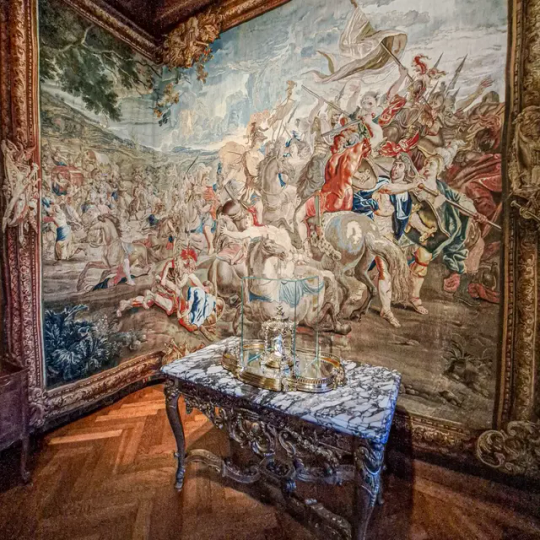
The beauty of Flemish tapestries.
From the 13th century till the 17th century, Flanders, Hainaut and Brabant were the epicentres of tapestry making. It were the most expensive pieces of art ( more expensive than paintings for example) from the Middle Ages till halfway the baroque period. They sometimes had silver or gold woven in it to give it more lustre. Initially only for sovereigns and the highest eclastical individuals, made on commission. The cartoons were originally made by the weavers, later by local artists, and later cartoons were sometimes made abroad and send to be woven in the workshops of the Southern Netherlands (read: Belgium and Northern France). Cities of tapestry making were among others. Atrecht (Arras : in italian tapestry are arazzi), Bruges, Tournai, Edingen, Oudenaarde, Geraardsbergen, Brussels. Even though Flanders was only one of the counties of the Southern Netherlands, the concept of Flemishis apllied to a wider area were Flemish culture was spread.
After Louis XIV broke the monopolies of the workshops in the Southern Netherlands after conquering territorirs during the Wars of the Spanish Succession, he brought over weavers from those lands and the Manufacture des Gobelins near Paris was being established, since then the French created their own style of tapestries, along with a reviving of a production in Aubusson, were flemish weaving techniques were already introduced during the 14th century and a small regional production was already established for wall and floor tapestry and for upholstery.
Many tapestries located in the areas conquered by the French Revolutionist mobs were burned in an attempt to retrieve the silver and gold ... resulting in the fact there are seemingly more surviving flemish (and french) tapestries to be found in England, Spain or Italy.
But the tapestries in this post, these are on display in the Castle of Gaasbeek, located south west of Brussels. They belong to a collection that was established during the 19th century.
One of the series of tapestries in the castle are the so-called Carrabara or Gypsy Suite dates from the Tournai studio of Arnould Poissonier and dates from ca. 1500-1525.
During the Flemish Renaissance period (sixteenth century), Tournai was one of the most important centers for tapestry production. People mainly wove with wool and silk. Typical details are the strongly defined folds in the clothing and the grass tufts that protrude everywhere in the landscape. Tournai carpets were known for their intense, contrasting colours. This is still noticeable, although the colors have faded. For example, the yellow has almost disappeared, making the green – which consists of a mixture of blue and yellow – increasingly bluer.
Gypsies used to be very distrusted, as a strange people of musicians, dancers and fortune tellers, but at the same time they were fascinating because of their unclear origins and their colorful customs. So ideal inspiration to make a tapestry about, as a conversation piece.
#historic buildings#historical#belgium#history#art history#historical interior#flanders#tapestry#tapestries#flemish art#flemish#flandes#flandres#flandern#fiandre#kasteel#chateau#kasteelvangaasbeek#tapisserie#arazzi#renaissance art#renaissance#baroque#decorative arts#arte#artwork#art#beautiful#amazing beauty#europe
49 notes
·
View notes
Text
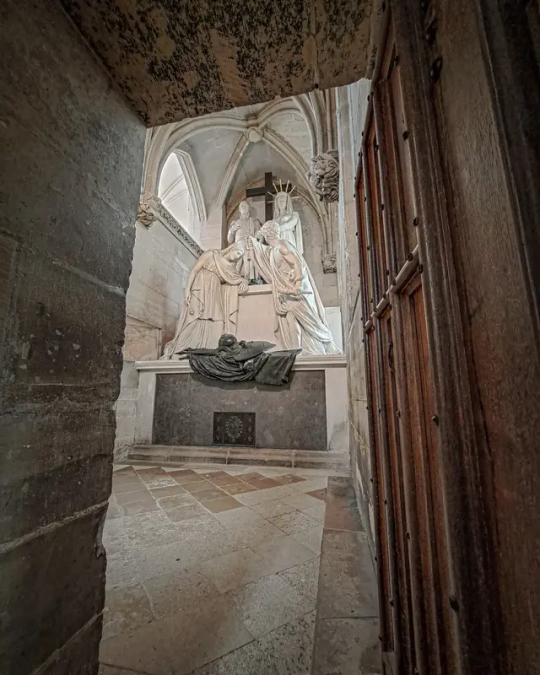

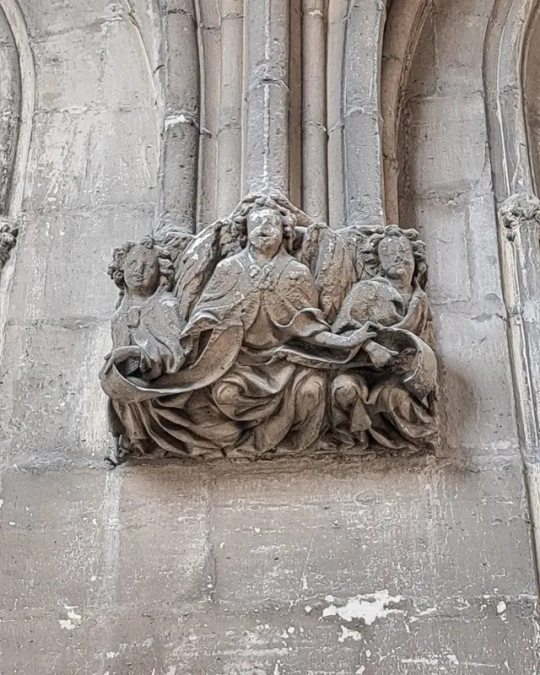
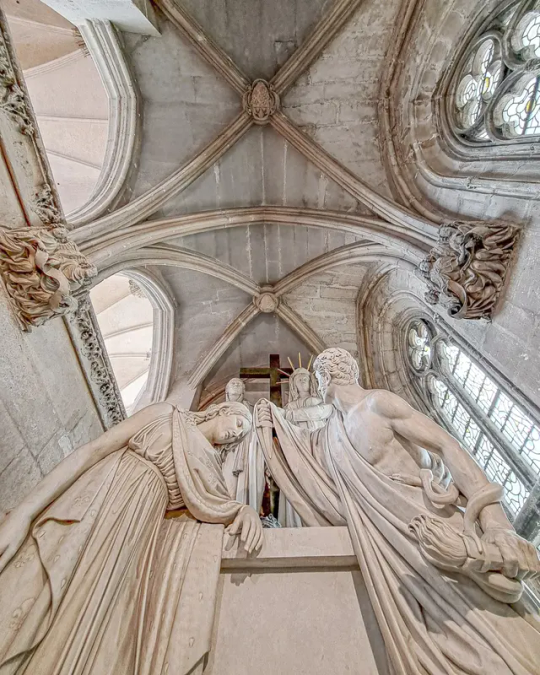
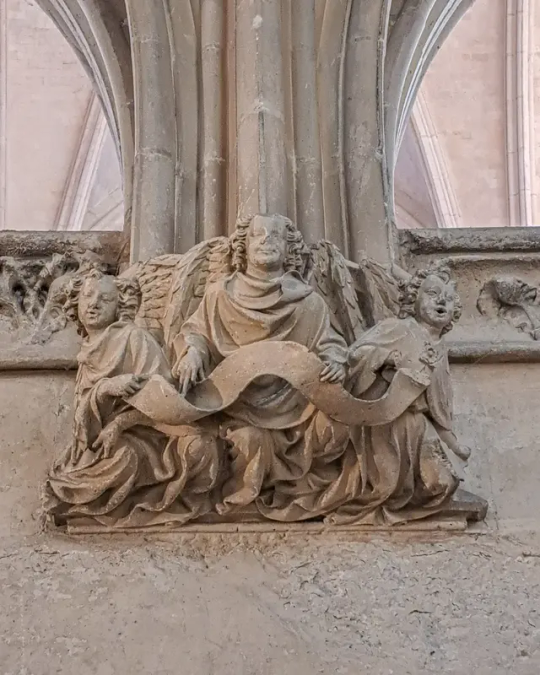

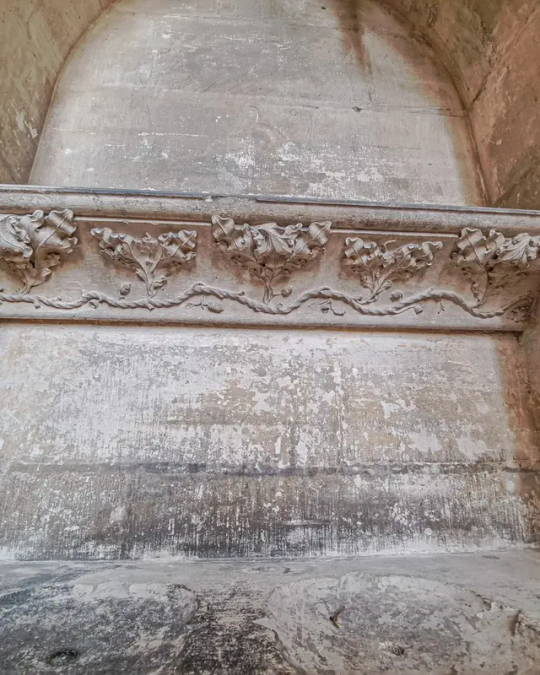
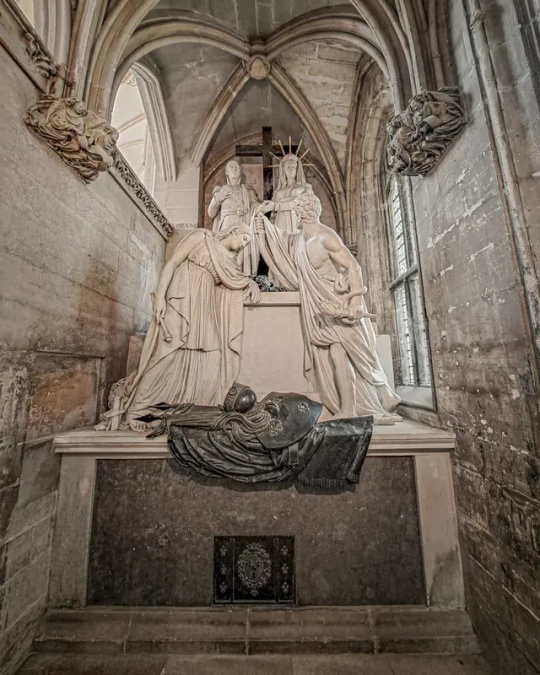
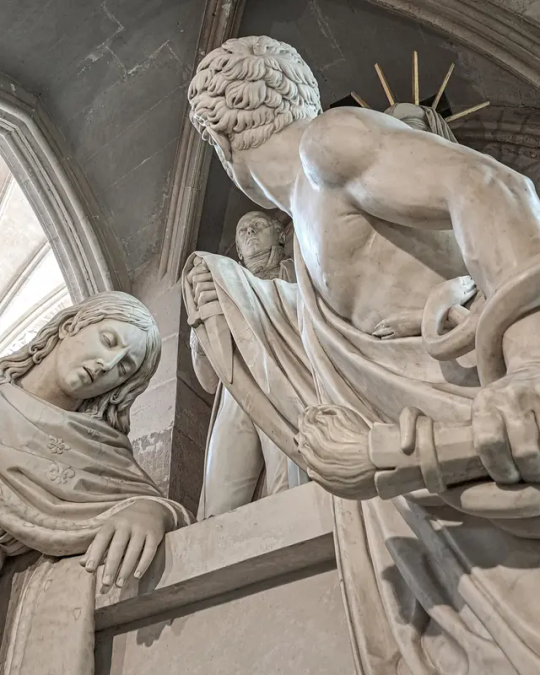
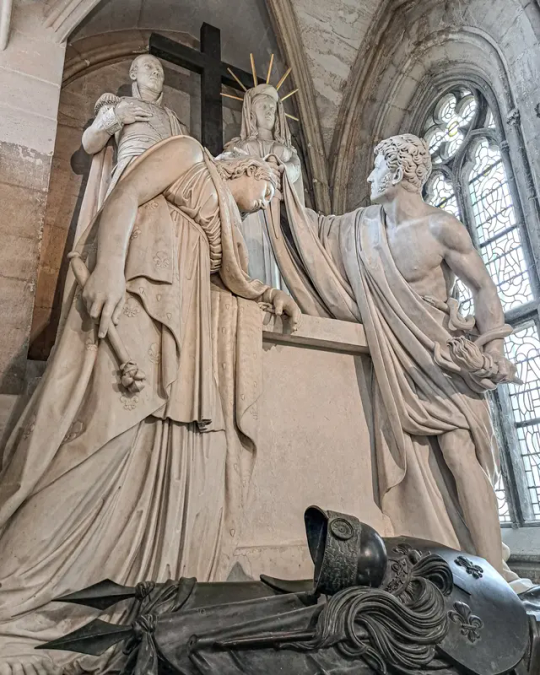
The Sainte-Chapelle de Vincennes is a Gothic royal chapel within the fortifications of the Château de Vincennes on the east edge of Paris, France. It was inspired by the Sainte-Chapelle, the royal chapel within the Palais de la Cité in Paris. It was begun in 1379 by Charles V of France to house relics of the Passion of Christ. It is no longer used as a church, and is now a French historical monument operated by the Centre des monuments nationaux.
Here on display the side chapel with the tombe of the Duc d'Enghien who was executed in 1804. (He was charged , innocently it seemed afterwards, to be involved complotting against First Consul Napoleon Bonaparte.) The sculpture is made by Pierre Louis Deseine in 1824.
#vincennes#chateaudevincennes#europe#architecture#historic buildings#architectural history#history#art history#historical#france#paris#sculptor#sculpture#scultura#tombeau#tombstone#tomb#tombe#neoclassico#neoclassicism#neoclassical#gothic#memorial#chapel#chapelle#funerary art#artwork#art#arte#explore
637 notes
·
View notes
Text

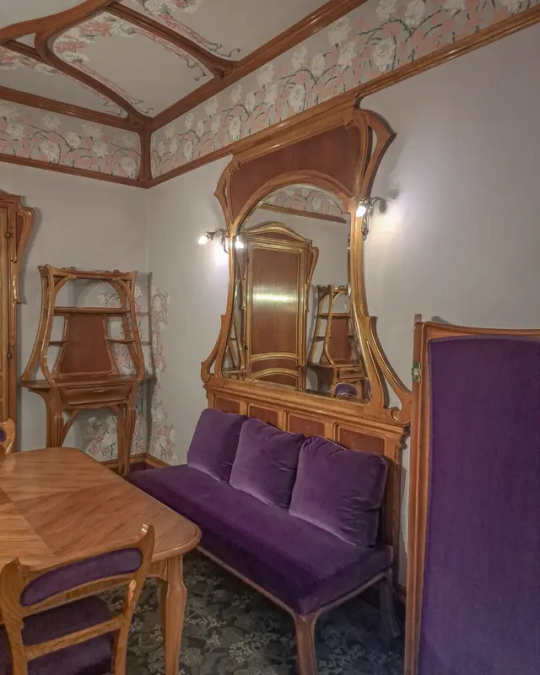
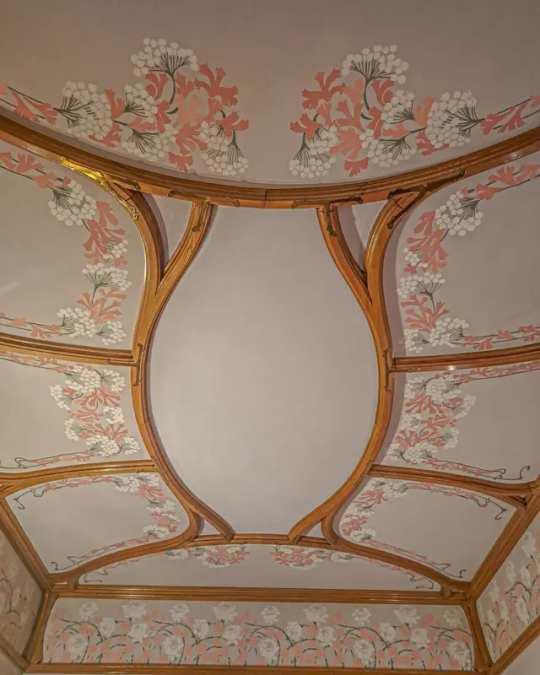

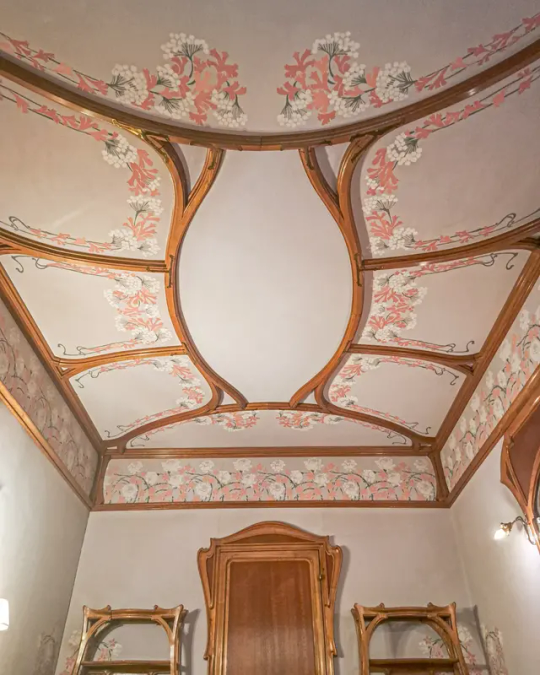
The reopened Carnavalet Museum in Paris (free entrance!) has some art nouveau style on display, next to the Fouquet jewelry shop this beautiful dining room.
Did i mention art nouveau is one of my favourite styles?
In the museum you discover the history of the city of Paris.
#artnouveau#art nouveau#paris france#france#paris 2024#paris#dining room#historical interior#europe#interior#interior design#interiors#interiorstyling#home interior#belle epoque#travel#citytrip#beautiful#beauty#furniture#purple#ceiling#painted decoration#decorative painting#mirror#bellezza#art history#museum#museecarnavalet#musee
21 notes
·
View notes
Text
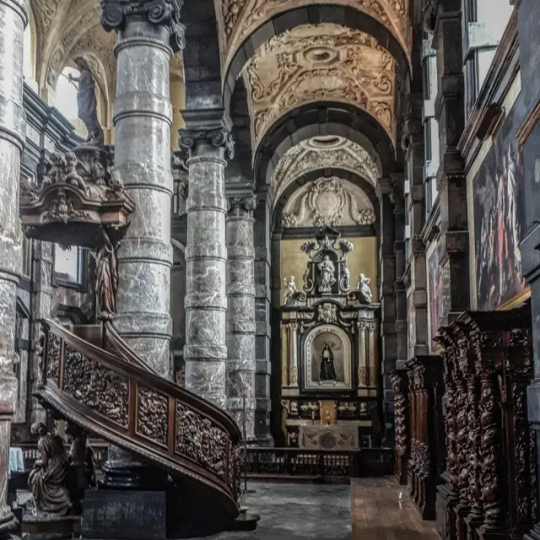
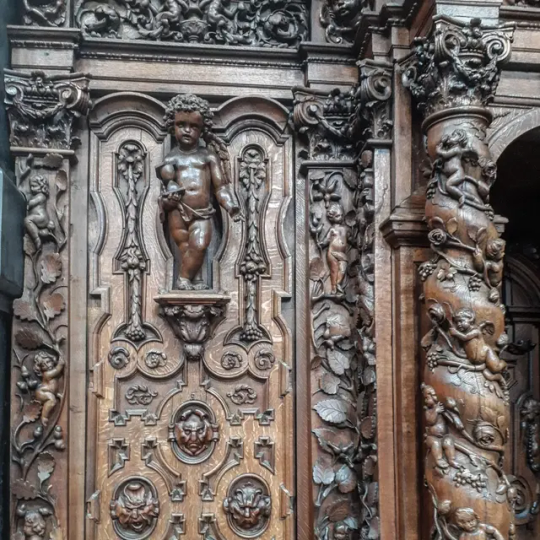


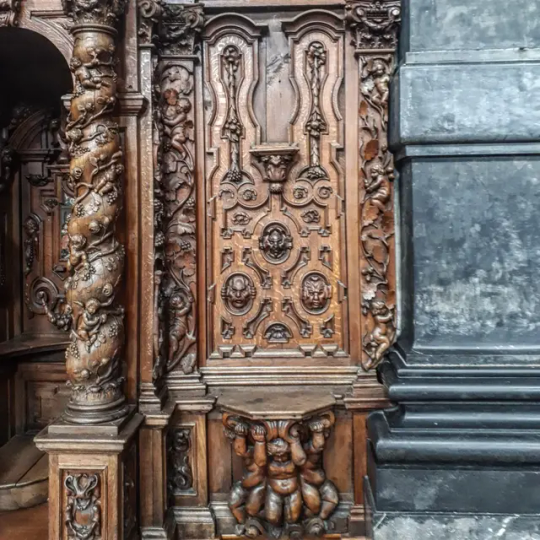
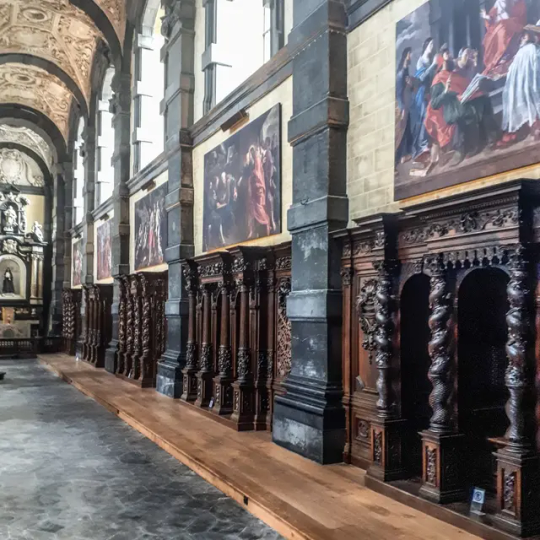
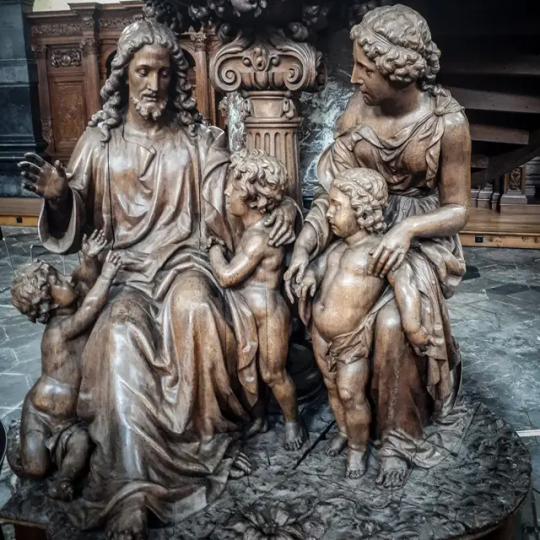
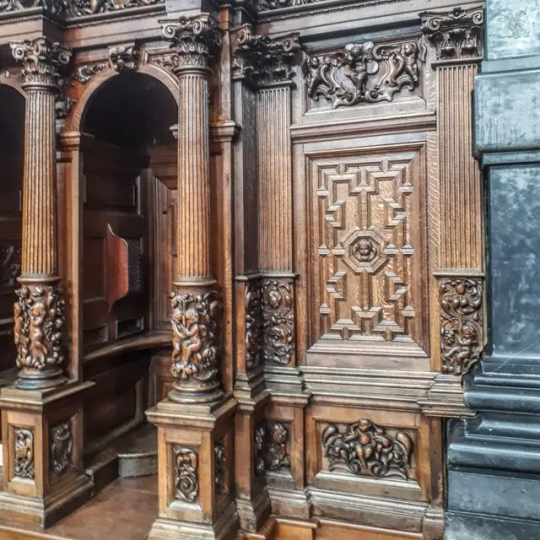


In the capital of Wallonia (the French speaking southern part of Belgium) you can find this amazing interior in Flemish baroque style of the Saint-Lupus Church (Église Saint-Loup).
It is one of the most important Baroque churches in Belgium and was built by the Jesuits between 1621 and 1645. Initially it was called Saint Ignatius Church (église Saint-Ignace), and served the adjacent Jesuit college. Today, this church is also used for concerts in addition to worship services.
After their arrival in the 17th century, the Jesuits took over a small college which they enlarged. Afterwards they built a church adjacent to this college, which was dedicated to Saint Ignatius, the founder of the Jesuit order. Pieter Huyssens (° Bruges, 1577, † Bruges, 6-6-1637), a Flemish Jesuit, architect and Baroque master, designed this church. Nevertheless, he did not live to see its completion: even at the start of the construction works, there appeared to be insufficient funds for immediate completion. Although the rector of the college regularly called for donations, the activities slowed down: they were forced to be spread over the period from 1621 to 1641. The architect himself died earlier: in 1637. After the completion of the church, it was finally consacrated.
#namur#namen#churches#church#eglise#igreja#iglesia#chiesa#kirche#belgium#belgie#belgica#belgique#church interior#ars sacra#wallonie#wallonia#patrimoine#heritage#baroque architecture#baroque#barok#barocco#religion#catholic#flemish#wood sculpture#wood#wood paneling#wood carving
186 notes
·
View notes
Text
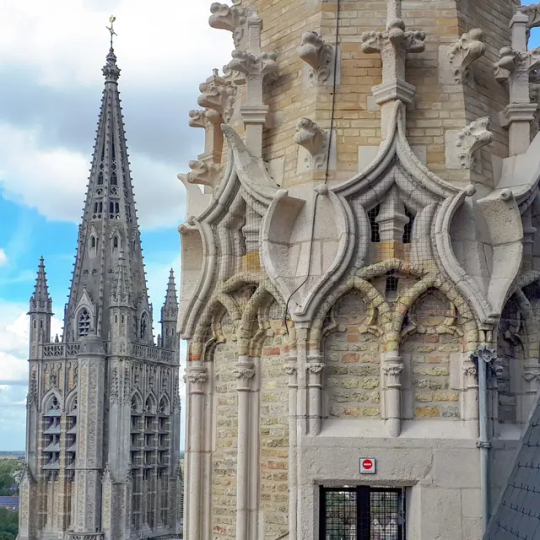
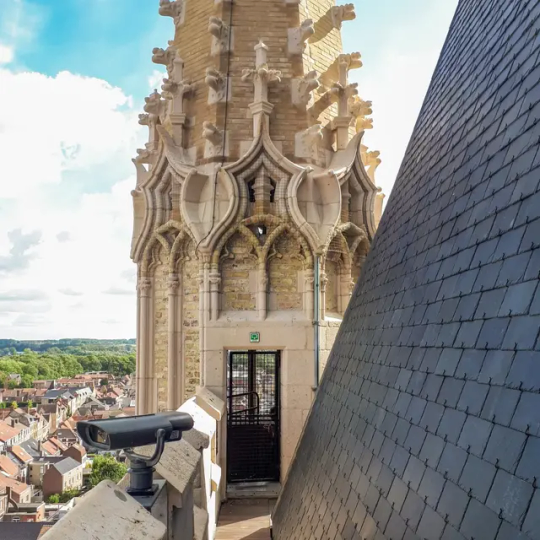
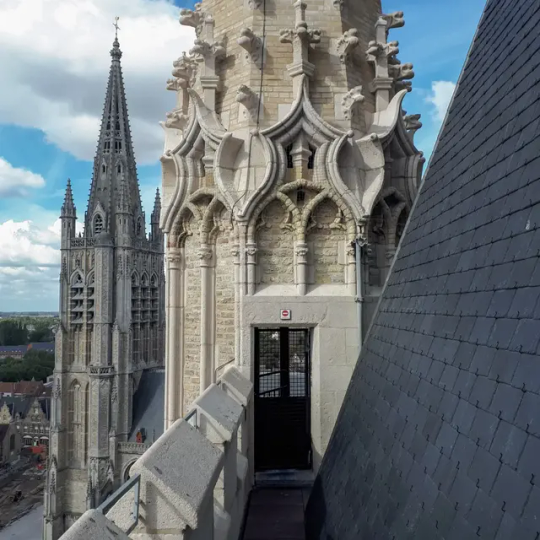
View from the belfry tower of Ypres (Ieper), with the tower of the Saint-Martin's Cathedral in the distance.
A belfry or hall tower is a medieval watchtower with a storm bell. More generally, 'belfry' refers to an urban tower in the Southern Netherlands (read: Belgium and Northern France). This type of tower was often built on or attached to a town hall or commercial cloth hall and was the place where the city bells were hung. A group of 56 belfries in Belgium and France are included in the UNESCO World Heritage List.
In the 13th century, the city of Ypres, as a testament to its power and wealth, built its public buildings in stone. And she does so with ambition: the Ypres cloth hall and the belfry are, at that time, one of the most impressive civil buildings in Europe! The Cloth Halls served as a covered sales and storage place for cloth on the (now arched) waterway, the Ieperlee. Construction of the halls was completed in 1304.
The Ypres belfry, 70 meters high, emphasizes the enormous importance of the cloth trade. This leads to the wealth and power of medieval Ypres. The belfry was the safest and best protected place in the city during the Middle Ages. It is also the storage place for the 'free letters' (documents declaring priviliges, local souvereignity and autonomy of the city) and for the treasury. The tower also serves as a weapons storage facility and as a watchtower to see approaching anemies of spot fires.
The tower, with its exception of the base was destroyed during the First World War and reconstructed.
#ieper#ypres#architecture#europe#historic buildings#historical#architectural history#belgium#history#flanders#flandres#fiandre#flandes#belfry#beffroi#belfort#gothic#gothic architecture#visitflanders#tower#the two towers#tours#unesco#unesco world heritage site#world heritage site#world heritage post#heritage#patrimoine#patrimonio#belvedere
36 notes
·
View notes
Text

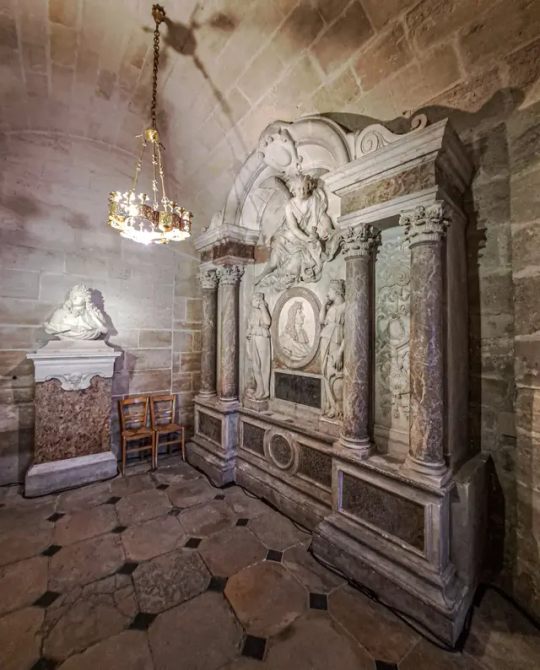


Not in the Dôme des Invalides (Saint-Louis des Invalides) in Paris, that he build to be buried in, but in a corner of the crypt of the Basilica-Cathedral of Saint-Denis is the last resting place of Louis le Grand, the Sunking, Louis IVX of France.
In 1794 his remains were removed by the French revolutionaries during the Terreur and as far they could retrieve reburied in 1817.
#europe#architecture#historical#history#art history#baroque architecture#baroque#arte#sculpture#tombstone#tomb#tombeau#funerary art#funeraria#france#paris france#paris 2024#paris#saint denis#basilica#basilique#royal#royalty#royauté#crypt#necropolis#halloween#louis IVX#king#roi
18 notes
·
View notes